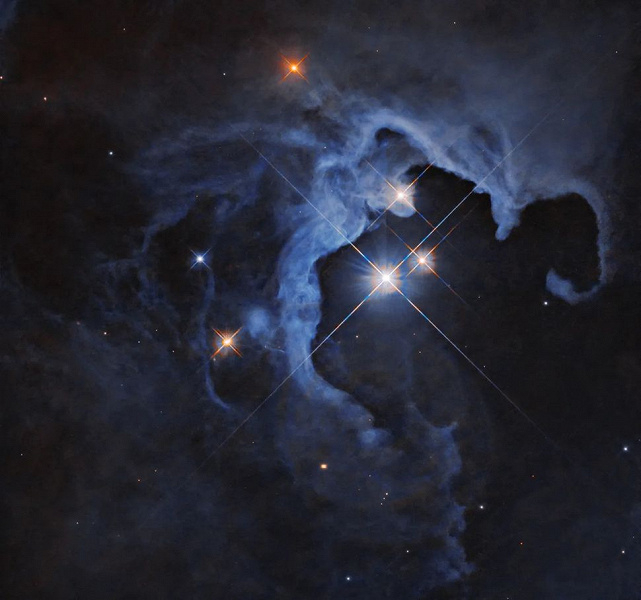Astronomers observe the star HP Tau to better understand the evolution of the young Sun
The Sun, which is now a stable and predictable star, exhibited much more active behavior in its youth about 4.6 billion years ago. In the early period of its existence, our star regularly generated powerful solar flares at intervals of about once a week. Moreover, the brightness of the Sun at that time was only about a third of its modern level.
Despite its relative dimness, the early Sun provided sufficient heating for the emergence of life on the young Earth. Subsequently, in the process of nuclear fusion of hydrogen into helium, the Sun began to warm up and increase its luminosity over millions of years, turning into a calm and bright luminary as we know it now.
The opportunity to explore young stars similar to the Sun in other parts of the Universe appeared thanks to the Hubble Space Telescope. One such object is the star HP Tau, which is visible in recent Hubble images on top of three brilliant stars. These stars emit light from a cavity surrounded by a billowing cloud of gas and dust, creating a blue glow by scattering starlight.
HP Tau is only 10 million years old, making it the youngest of this stellar «trio it is located approximately 550 light years from Earth in the constellation Taurus& nbsp;in a dense layer of the primary gas and dust cloud in which it was formed. In the depths of HP Tau nuclear fusion has not yet begun — it gradually evolves, and the life cycle of this star is similar to the life cycle of the Sun.
The brightness of HP Tau shows both periodic and chaotic variations. Scientists attribute this to the turbulent and unstable nature of the young star. Random changes in brightness can be explained by the fall of surrounding matter onto the star and flares on its surface. More regular fluctuations may be due to star spots periodically obscuring the view.
Studying the evolution of young Sun-like stars such as HP Tau is of great interest to astronomers. Comparison of these data with observations of the Sun at different stages of its development will allow us to better understand the past, present and future of our native star.

